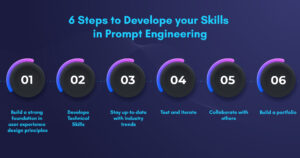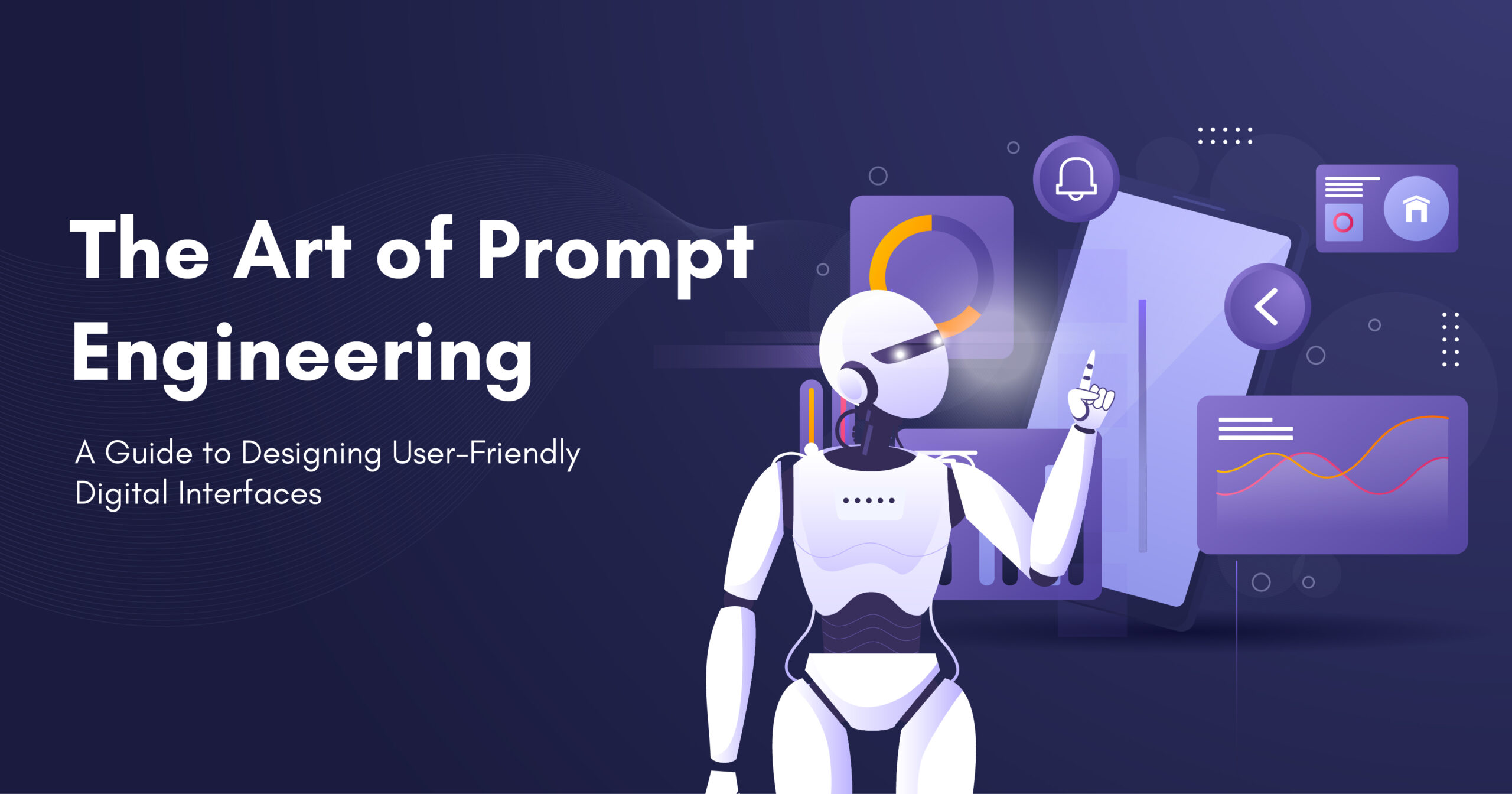Crafting user-friendly prompts is a crucial component of designing digital interfaces that are effective. These prompts help improve customer engagement, accessibility, trust, and satisfaction. As technology advances and users’ standards increase, prompt engineering will only grow in importance for businesses striving to thrive in the digital era.
6 Steps to Develop Your Skills in Prompt Engineering
So, how can you become an expert in prompt engineering? Here are some steps you can take to develop your skills in this area:

1. Build a strong foundation in user experience design principles
Before you can create effective prompts, you need to understand how users interact with digital interfaces and what they expect from their experiences. For example, let’s say you’re designing a checkout flow for an e-commerce website. You’ll need to consider factors like the number of steps in the checkout process, the types of information users are required to provide, and the clarity and ease-of-use of the prompts used to guide them through the process.
2. Develop technical skills
Familiarize yourself with the tools and technologies used to create prompts, such as HTML, CSS, and JavaScript. For example, let’s say you’re designing a tooltip that appears when a user hovers over a particular element on a web page. You’ll need to understand how to use CSS to style the tooltip, and how to use JavaScript to trigger its appearance and behavior.
3. Stay up-to-date with industry trends
Follow blogs, forums, and social media channels focused on user experience design and digital interface development. For example, you might read articles about emerging design patterns for prompts, or join online communities where designers share tips and best practices.
4. Test and iterate
Testing is an essential part of prompt engineering. Use analytics and user feedback to identify pain points in your prompts and refine your designs accordingly. For example, you might conduct A/B tests to compare the effectiveness of different types of prompts, or gather feedback from real users to gain insights into how your prompts are being received.
5. Collaborate with others
Prompt engineering requires collaboration with other designers, developers, and stakeholders. Practice working with cross-functional teams and communicating effectively with colleagues from different backgrounds and disciplines. For example, you might collaborate with a UX researcher to conduct user testing, or work with a front-end developer to implement your designs.
6. Build a portfolio
As you gain experience in prompt engineering, create a portfolio that showcases your work and demonstrates your expertise. Include examples of different types of prompts and highlight the results you achieved through testing and iteration. For example, you might include case studies of prompt designs you created for different clients or projects, along with metrics that demonstrate the impact of your work.
By following these steps, you can develop the skills and expertise needed to become an effective prompt engineer. Whether you’re working on a small project for a local business or designing prompts for a large-scale enterprise application, the principles of prompt engineering will be essential for creating digital interfaces that are intuitive, accessible, and effective.

Now, here’s an example of how a prompt for ChatGPT can be iterated. We need to ask Chat GPT about Italian Cuisines, following prompts can be used to generate a response:
Good prompt: “Tell me about Italian Cuisine”
Better prompt: “Can you give me an overview of Italian cuisine, including popular dishes and cooking styles?”
Even better prompt: “I’m planning a trip to Italy and want to experience the local cuisine. Can you provide some recommendations for traditional Italian dishes and cooking techniques that I should try?”
The “good” prompt is too vague and doesn’t provide enough context for ChatGPT to give a useful response. The “better” prompt provides more detail and guidance, making it easier for ChatGPT to understand what kind of information is being requested. The “even better” prompt is even more specific, giving ChatGPT a clear goal to aim for and ensuring that the response is tailored to the user’s needs. By refining the prompt in this way, the user is more likely to receive a useful and relevant response from ChatGPT.
Remember that prompt engineering is just one part of a larger digital strategy. If you need help creating effective digital interfaces that drive results, consider reaching out to Strategy First. Our experienced professionals can work with you to create intuitive, accessible prompts that meet the needs of your users and align with your overall digital strategy. Don’t let poor prompts hinder your user experience – partner with Strategy First and let us help you create effective digital interfaces that drive results.

